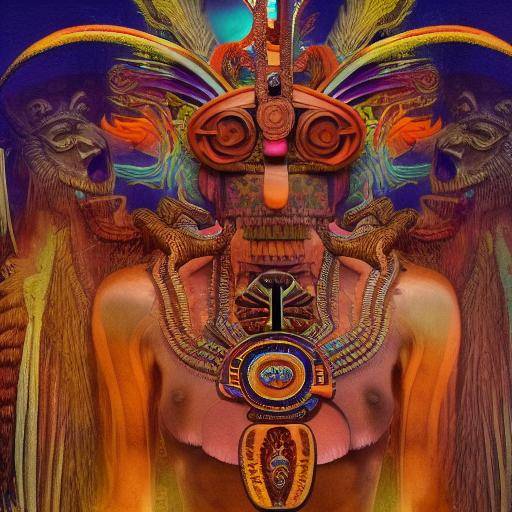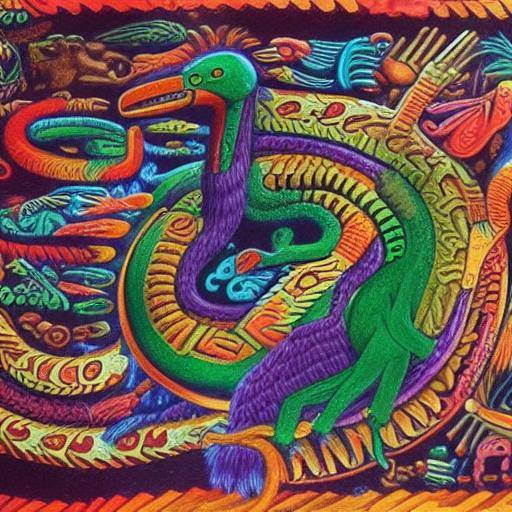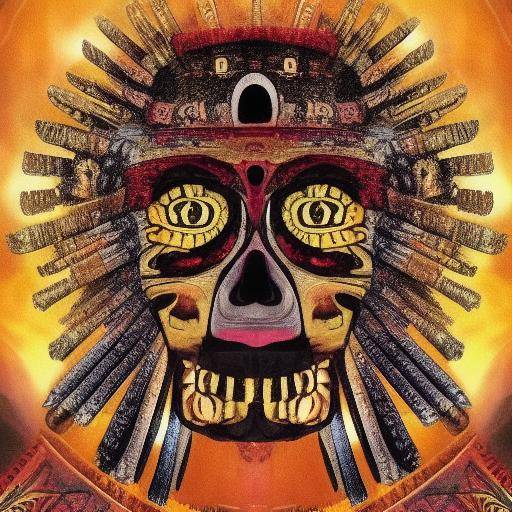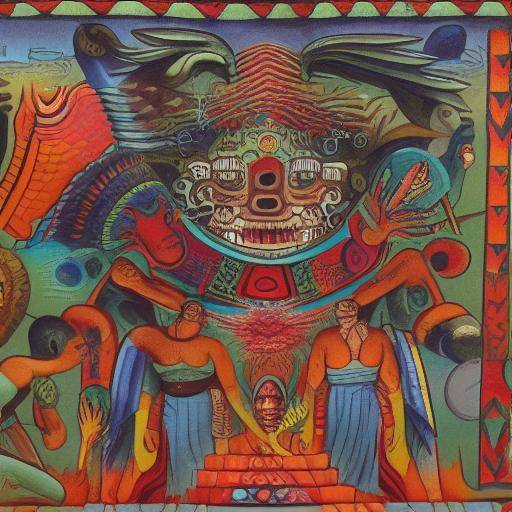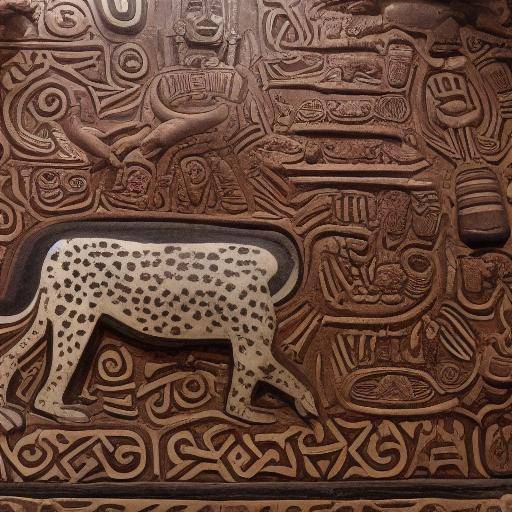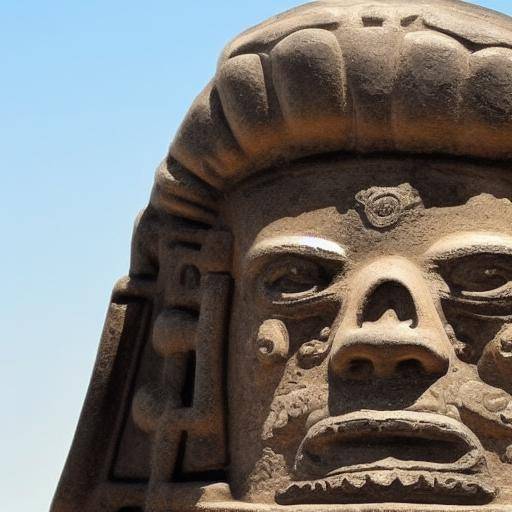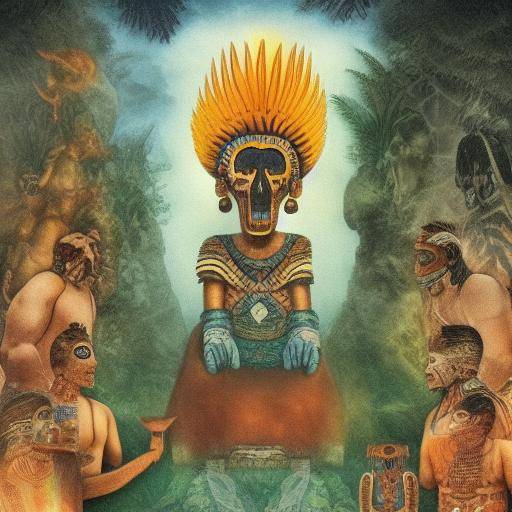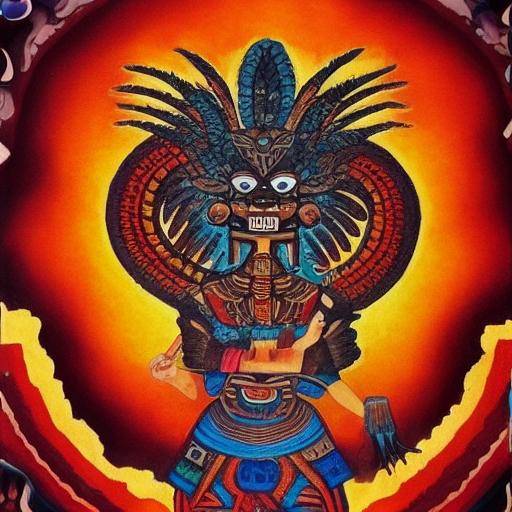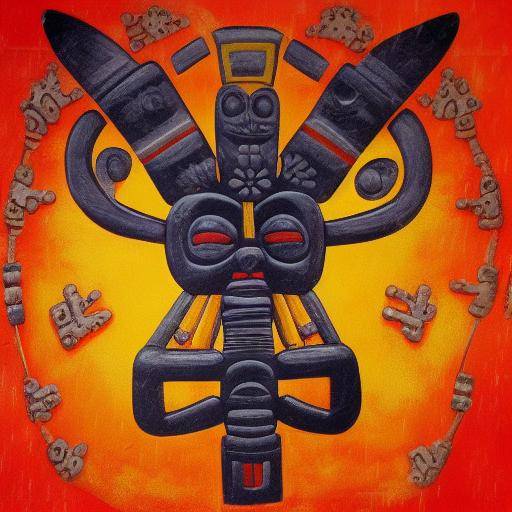
The myth of Tlaloc, the Aztec god of rain, is one of the most prominent and venerated figures in Mesoamerican mythology. Its influence extends for centuries, transcending time and leaving an incomparable legacy in Mexican culture. In this article, we will explore in depth the history, mythology and the importance of Tlaloc, revealing its most fascinating legends and its meaning in the cultural and religious context of the time.
Introduction
The figure of Tlaloc, considered the god of rain, is fundamental in Aztec and Mesoamerican mythology in general. Its influence transcends the borders of time and has endured in popular culture as a symbol of fertility, protection and divine power. In this article, we will immerse ourselves in the intriguing world of Tlaloc, exploring its origin, legends and its importance in Aztec mythology, offering a comprehensive and enriching look about this venerated deity.
History and Background of Tlaloc
Tlaloc, whose name means "he who makes things grow", is one of the oldest and most revered deities in Aztec mythology. Its presence dates back to the pre-Columbian era, where its influence was crucial for the survival of agricultural communities. It was considered that Tlaloc controlled the rain, rays, hail and climate in general, essential aspects for the success of crops and the subsistence of the population.
The veneration of Tlaloc was intrinsically related to agricultural activities, since it was believed that its benevolence ensured good harvests and prosperity. His worship was marked by rituals, offerings and celebrations, and was worshipped in multiple temples throughout Mesoamerica, with the Great Temple of Tenochtitlán being one of the main centers of his worship.
Legends and Mythology of Tlaloc
Legends around Tlaloc were abundant and varied, offering a fascinating view of their role in Aztec mythology. One of the most prominent narratives is the association of Tlaloc with the creation of the world, being considered one of the four Téntlipocas that contributed to the formation of the earth and humanity. In addition, he was given power over natural phenomena and represented as a frightening deity that could cause floods and droughts according to his will.
Another prominent legend relates to the belief in the existence of Tlalocan, its heavenly kingdom, a place of abundance and eternal happiness to which only the sacrificed, the drowned and those who died of water-related diseases had access. This aquatic paradise was the home of Tlaloc and his divine entourage, and was considered a desired destination in life after death.
Cultural and Religious Importance
The veneration of Tlaloc was not only rooted in the belief of its power over natural elements, but also played a crucial role in religious ceremonies and festivities. The rituals dedicated to Tlaloc included dances, food offerings and human sacrifices, the latter seen as a way of applauding their anger and ensuring their divine favor for the community.
In addition, its influence extended to other aspects of everyday life, as its figure was associated with fertility, plant growth and prosperity. Farmers and rural communities were heavily dependent on Tlaloc's benevolence to ensure good harvests and economic stability.
In the Aztec cosmogony, Tlaloc was prominent among the main deities, demonstrating its importance in the religious and cultural framework of the time. His presence served not only with nature, but also with the very structure of the universe, highlighting its transcendental influence on all aspects of Aztec life.
Tlaloc in the News
Although direct worship of Tlaloc ceased with the arrival of the Spanish conquerors and the imposition of Catholicism, its legacy and its influence persist in contemporary Mexican culture. Many of the traditions and festivities associated with Tlaloc have been intertwined with Christian celebrations, leading to syncretisms that still show the heritage of worship of this ancestral deity.
In addition, the image of Tlaloc and references to his power remain present in the art, folklore and iconography of Mexico, recalling its lasting importance in the collective imagination. Its presence remains an evocation of the connection between nature and the divine, as well as a reminder of the rich and complex pre-Hispanic mythology that is still in force in Mexico's cultural identity.
Conclusion
Tlaloc, the god of rain, remains an emblematic figure in Aztec mythology, his legends capture the very essence of the Mesoamerican worldview, revealing the profound respect and reverence that the ancient inhabitants had for the natural phenomena and the spiritual world. His legacy persists not only in history, but also in the traditions and cultural identity of Mexico, being a powerful reminder of the richness and depth of Mesoamerican mythology.
Frequently asked questions
1. What is the symbolic meaning of Tlaloc in Aztec mythology?
Tlaloc represents the power of rain and the natural phenomena associated with it. Its symbolic role encompasses fertility, prosperity and the connection between humanity and nature.
2. Why was Tlaloc so important to the Aztecs?
For the Aztecs, Tlaloc was fundamental because it controlled the climate and therefore the success of the crops and the subsistence of the population. His influence transcended the purely natural and extended to spirituality and cosmogony.
3. What were the rituals associated with Tlaloc?
The rituals included food offerings, dances, religious ceremonies and, at times, human sacrifices as a way to appease Tlaloc and ensure his divine favor.
4. How has Tlaloc's influence on contemporary culture persisted?
Although the direct worship of Tlaloc ceased with the arrival of the Spaniards, its legacy persists in contemporary Mexican culture through art, folklore and festivities that reflect the lasting influence of this deity.
5. What similarities and differences exist between Tlaloc and other rain gods in different cultures?
Tlaloc shares similarities with other rain gods in different cultures in their role as climate controller and their association with fertility, although specific manifestations vary according to local traditions and beliefs.
6. What does the figure of Tlaloc reveal to us about the Aztec cosmovision?
The figure of Tlaloc reveals a profound connection between nature and the divine in the Aztec cosmovision, where natural phenomena were seen as manifestations of divine powers, which entailed a deep reverence towards the natural environment.
In conclusion, the legacy of Tlaloc in Aztec mythology transcends time and continues to inspire admiration and respect in the present. His veneration reflects the profound understanding and reverence that the Aztecs had towards nature and its interconnection with the divine, leaving a lasting legacy that enriches the understanding of Mesoamerican culture and its influence on Mexican identity. Tlaloc, the god of rain, remains an emblematic figure in Aztec mythology, his legends capture the very essence of the Mesoamerican worldview, revealing the profound respect and reverence that the ancient inhabitants had for the natural phenomena and the spiritual world. His legacy persists not only in history, but also in the traditions and cultural identity of Mexico, being a powerful reminder of the richness and depth of Mesoamerican mythology.
Frequently asked questions
**What is the symbolic meaning of Tlaloc in Aztec mythology?**Tlaloc represents the power of rain and the natural phenomena associated with it. Its symbolic role encompasses fertility, prosperity and the connection between humanity and nature.
**Why was Tlaloc so important to the Aztecs?**For the Aztecs, Tlaloc was fundamental because it controlled the climate and therefore the success of the crops and the subsistence of the population. His influence transcended the purely natural and extended to spirituality and cosmogony.
**What were the rituals associated with Tlaloc?**The rituals included food offerings, dances, religious ceremonies and, at times, human sacrifices as a way to appease Tlaloc and ensure his divine favor.
**How has Tlaloc's influence on contemporary culture persisted?**Although the direct worship of Tlaloc ceased with the arrival of the Spaniards, its legacy persists in contemporary Mexican culture through art, folklore and festivities that reflect the lasting influence of this deity.
**What similarities and differences exist between Tlaloc and other rain gods in different cultures?**Tlaloc shares similarities with other rain gods in different cultures in their role as climate controller and their association with fertility, although specific manifestations vary according to local traditions and beliefs.
**What does the figure of Tlaloc reveal to us about the Aztec cosmovision?**The figure of Tlaloc reveals a profound connection between nature and the divine in the Aztec cosmovision, where natural phenomena were seen as manifestations of divine powers, which entailed a deep reverence towards the natural environment.
In conclusion, the legacy of Tlaloc in Aztec mythology transcends time and continues to inspire admiration and respect in the present. His veneration reflects the profound understanding and reverence that the Aztecs had towards nature and its interconnection with the divine, leaving a lasting legacy that enriches the understanding of Mesoamerican culture and its influence on Mexican identity.

